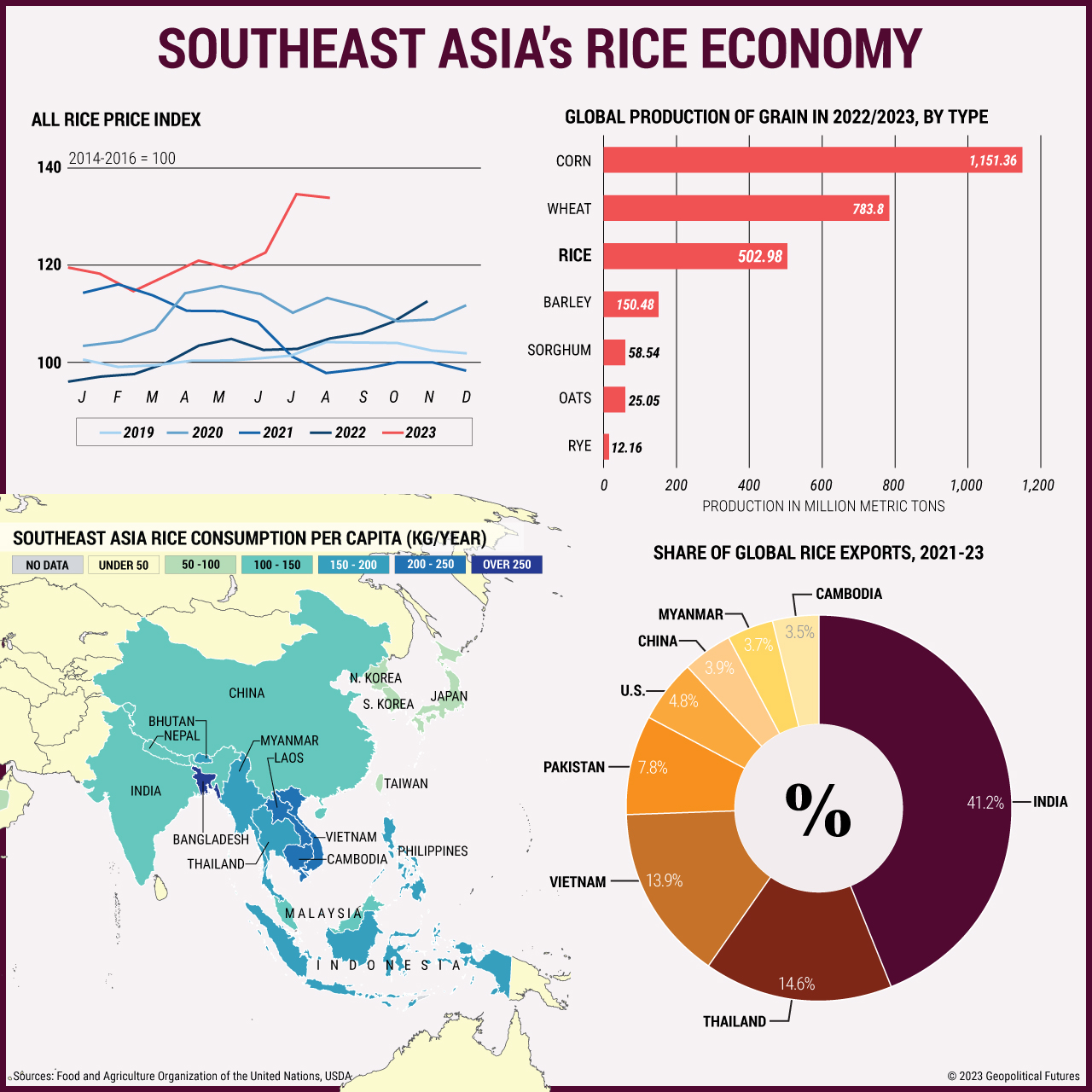The global rice market is currently facing a storm due to a mix of climate change, El Nino and restrictive export policies, notably from India on non-basmati rice. These elements have driven global rice prices to a 15-year high. In response, people in countries like Thailand and Vietnam have started hoarding rice, fearing further price hikes. Vietnam’s agriculture is taking a hit from climate change, prompting some farmers to switch from rice to other crops like mango, signaling a long-term dip in rice production. This year, Myanmar joined the list of countries restricting rice exports, and it’s anticipated that India, a key player in the global rice market, will tighten its export restrictions further next year. These developments paint a grim picture for rice availability in 2024. The situation is exacerbated by China reducing water flow in the Mekong River due to lower rainfall from El Nino, affecting rice-producing regions.
On a brighter note, some countries are cushioned against this crisis. Japan is lowering its rice consumption, while China and Indonesia have built up rice reserves following the shortages during the COVID-19 pandemic. India has also slashed the minimum price for basmati rice exports, aiming to boost its global market share. However, these measures might not be enough to offset the rising concerns among Asian governments and experts, as economic woes deepen alongside climate challenges. The road to stabilizing the global rice trade may hinge on relaxing export restrictions, particularly in India.





